Are You Showing Signs of Hypoxia? Here Are the Signs and Your Next Steps

Have you noticed lately that simple tasks like climbing stairs or taking a brisk walk leave you feeling unusually breathless and fatigued? Perhaps you've brushed it off as a result of aging or a temporary lack of fitness.
Well doing so could be prolonging or progressing a diagnosis that would ultimately lead to a healthier and longer life.
.png?width=421&height=301&name=COPD%20graphic%202%20(1).png)
It's essential to pay attention to these respiratory issues as they might be signaling something more significant than you have led yourself to believe. Ignoring persistent breathlessness and fatigue could mean missing important signs that warrant your attention and even a trip to the doctors.
In this blog, we will dive into these respiratory issues, exploring potential underlying causes and why it's crucial to take them seriously.
So, buckle down and focus on the ways you feel and relate to the signs and symptoms in this blog so you can follow the next steps. Get ready to learn more about these symptoms that could be a bigger deal than you ever imagined.
Looking out For the Signs: Hypoxia and Breathlessness

Hypoxia, a condition characterized by insufficient oxygen supply to the body's tissues and organs, can have serious implications for overall health.
Recognizing the signs of hypoxia is crucial for prompt diagnosis and effective treatment.
In this blog, we will explore the signs of hypoxia, distinguish it from hypoxemia, and discuss the tools available for managing diseases associated with these conditions, lastly we lay out some of the steps you can take if you are experiencing hypoxia and breathlessness.
Shortness of Breath:
One of the most common signs of hypoxia is difficulty breathing or feeling breathless, even with minimal physical exertion.
Cyanosis: Hypoxia may cause the skin, lips, and nails to appear bluish due to inadequate oxygenation.
Fatigue and Weakness:

Insufficient oxygen supply can lead to generalized fatigue and weakness, affecting overall energy levels.
Confusion and Cognitive Impairment:
In cases of severe hypoxia, individuals may experience confusion, memory problems, difficulty concentrating, and impaired judgment.
Rapid Heart Rate and High Blood Pressure:
The body compensates for oxygen deficiency by increasing heart rate and blood pressure to enhance oxygen delivery.
Headaches and Dizziness:
Hypoxia may manifest as frequent headaches, dizziness, or lightheadedness due to compromised brain function.
Is There a Difference Between Hypoxia and Hypoxemia
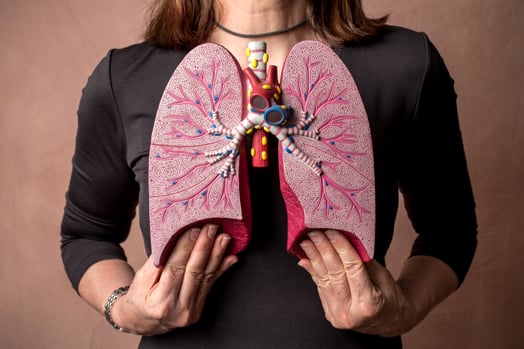
While the terms hypoxia and hypoxemia are related to insufficient oxygen levels and they even sound similar, they differ in their underlying causes and specific meanings.
Hypoxia refers to inadequate oxygenation of tissues and organs, which can result from various factors such as lung diseases, heart conditions, anemia, or high altitudes.
Hypoxemia, on the other hand, specifically denotes low oxygen levels in the blood. It can occur due to respiratory issues, such as lung infections, chronic obstructive pulmonary disease (COPD), or acute respiratory distress syndrome (ARDS).
Your Tool Box for Treating Hypoxia and Hypoxemia
Oxygen Therapy
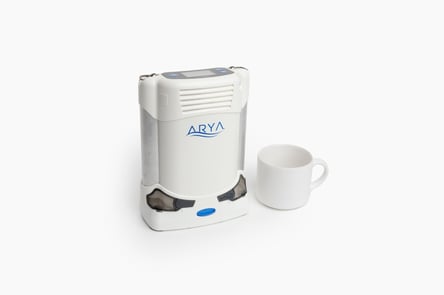
Oxygen therapy is a common treatment for both hypoxia and hypoxemia. It involves administering supplemental oxygen to increase oxygen levels in the blood and alleviate symptoms. Portable oxygen concentrators are practical and convenient devices for individuals requiring long-term oxygen therapy. These devices efficiently extract oxygen from the air and deliver it directly to the patient.
Medications
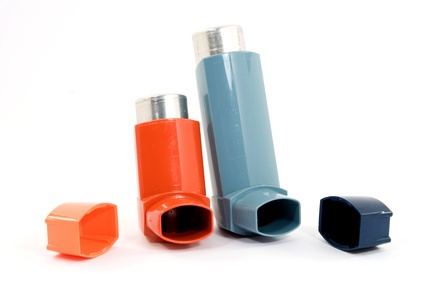
Depending on the underlying cause of hypoxia or hypoxemia, specific medications may be prescribed. For example, bronchodilators help relax airway muscles in asthma or COPD, improving airflow and oxygenation.
Respiratory Support
In severe cases, when breathing becomes significantly compromised, mechanical ventilation may be necessary. This involves using a ventilator to assist with breathing and maintain adequate oxygen levels.
Taking Care to Monitor Your Oxygen Levels as You Age
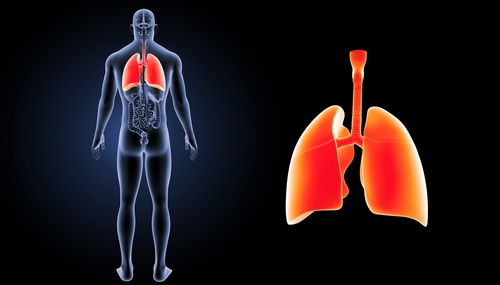
As we get older, our bodies may become more vulnerable to oxygen-related complications. Regular monitoring of oxygen levels becomes vital to ensure timely intervention.
One useful tool for monitoring oxygen levels is a pulse oximeter. A pulse oximeter is a non-invasive device that measures oxygen saturation in the blood and heart rate. It clips onto a finger or earlobe and provides immediate readings.
Using a Pulse Oximeter
To use a pulse oximeter, simply follow these steps:
- Ensure your hands or finger are clean and dry.
- Place your finger inside the device, making sure it fits snugly.
- Press the power button to activate the pulse oximeter.
- Wait for a few seconds until the device displays your oxygen saturation (SpO2) level and heart rate.
Maybe try to keep a journal, and log your results. Being prudent about recording the readings and monitoring any changes over time will contribute to a greater quality of life.
Using a Portable Oxygen Concentrators from LPT Medical:

In addition to pulse oximeters, LPT Medical specializes in providing portable oxygen concentrators (POCs) to cater to the needs of new and existing oxygen patients. Portable oxygen concentrators offer the flexibility and freedom to maintain oxygen therapy while on the go. LPT Medical offers a wide range of POCs from reputable brands, ensuring reliable oxygen delivery wherever you are.
Why Choose LPT Medical:
LPT Medical is a trusted supplier known for their commitment to customer satisfaction and quality products. They provide comprehensive information about each portable oxygen concentrator they offer, assisting individuals in making informed decisions. By purchasing a portable oxygen concentrator from LPT Medical, patients can experience improved mobility and enhanced quality of life.
Next Steps to Take If You Are Experiencing Signs of Hypoxia
Experiencing signs of hypoxia can be concerning, but it's essential to take appropriate steps to address the situation promptly. If you notice symptoms such as persistent shortness of breath, cyanosis, fatigue, confusion, rapid heart rate, or headaches, consider the following actions:
Seek Medical Attention: Contact your healthcare provider and explain your symptoms in detail. They can guide you through the next steps and provide a proper evaluation and diagnosis. Remember, professional medical advice is crucial for accurate assessment and personalized treatment.
Follow Medical Recommendations: If diagnosed with hypoxia, follow your healthcare provider's recommendations diligently. They may suggest additional tests, such as blood work, pulmonary function tests, or imaging studies, to determine the underlying cause and severity of the condition.
Oxygen Therapy: Depending on the severity of your hypoxia, your healthcare provider may recommend oxygen therapy. This involves providing supplemental oxygen to increase oxygen levels in your body. Oxygen therapy can be administered through various methods, such as nasal cannulas, oxygen masks, or portable oxygen concentrators. Follow your healthcare provider's instructions on how to use the prescribed oxygen delivery device effectively.
Lifestyle Modifications: In addition to medical interventions, certain lifestyle changes can support your overall respiratory health. These may include quitting smoking, maintaining a healthy weight, exercising regularly, and avoiding environments with poor air quality.
Follow-Up Care: Regular follow-up appointments with your healthcare provider are essential to monitor your progress, adjust treatment if necessary, and address any concerns or new symptoms that may arise. Compliance with recommended check-ups and tests can help ensure optimal management of your condition.
Remember, the steps outlined above serve as general guidelines. The specific actions to take will depend on the advice and recommendations of your healthcare provider, as they can provide personalized care tailored to your individual needs.
Let's WrapThis All Up
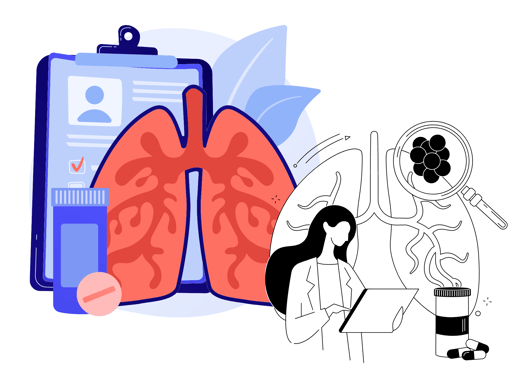
That was a lot of information here are the important takeaways from this blog!
Hypoxia and hypoxemia are conditions that warrant prompt attention and appropriate treatment to prevent further complications. Recognizing the signs of hypoxia, including shortness of breath, cyanosis, fatigue, confusion, and rapid heart rate, is crucial for early intervention.
Understanding the distinction between hypoxia and hypoxemia helps healthcare professionals accurately diagnose the underlying cause. With the aid of tools like oxygen therapy, medications, and respiratory support, individuals experiencing these conditions can receive effective treatment and improve their quality of life.
In conclusion, if you experience signs of hypoxia, it is crucial to seek medical attention promptly, follow medical recommendations, and consider oxygen therapy if prescribed. Taking proactive steps and collaborating with healthcare professionals can help manage hypoxia effectively and improve your overall respiratory health and quality of life.



